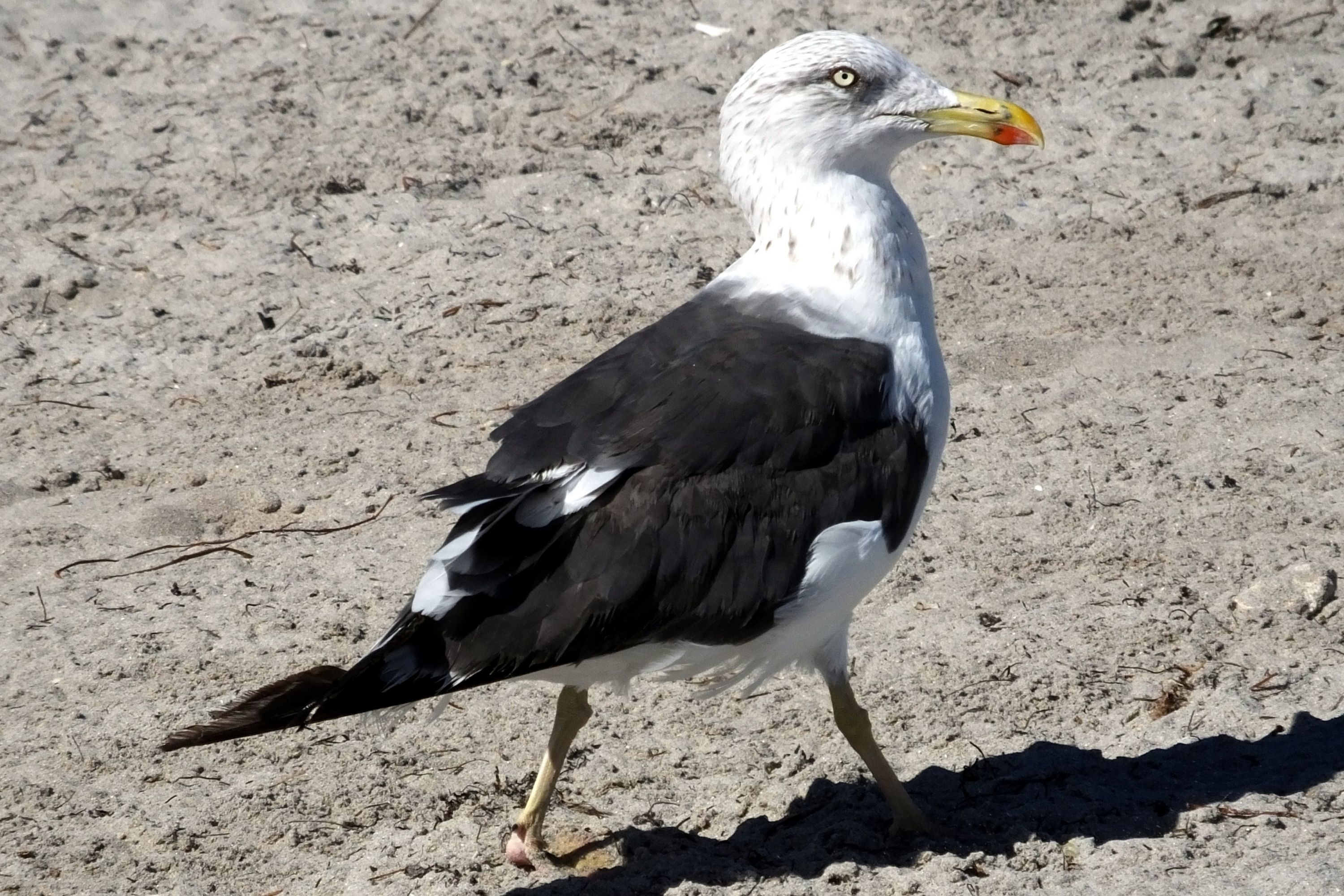Lesser black-backed gull
(Larus fuscus)

Description
Larus fuscus, commonly known as the lesser black-backed gull, is a medium-sized gull species that belongs to the family Laridae. It is found throughout the coastal regions of the Northern Hemisphere, including Europe, Asia, and North America. In this article, we will take an in-depth look at the lesser black-backed gull, covering its taxonomy, physical characteristics, habitat, behavior, diet, and conservation status. Taxonomy: The lesser black-backed gull was first described by Linnaeus in 1758, and its scientific name is Larus fuscus. It belongs to the genus Larus, which is a group of large gulls that includes over 50 species. The species name "fuscus" means dark or dusky, referring to the bird's plumage. Physical Characteristics: The lesser black-backed gull is a medium-sized gull, measuring between 52 to 68 cm in length and weighing between 550 to 1150 g. The wingspan of the lesser black-backed gull ranges from 124 to 155 cm. The adult bird has a dark gray back, wings, and head, while the belly and the undersides of the wings are white. The beak is yellow with a red spot on the lower mandible, and the legs are yellowish-green. In winter, the head and neck of the bird become streaked with white. Juvenile lesser black-backed gulls have a brownish-gray back and wings, with a white belly. Habitat: The lesser black-backed gull is a coastal species, found along the shores of the Northern Hemisphere. It breeds in northern Europe, Asia, and Greenland, and spends the winter along the coasts of western Europe, the Mediterranean, and North Africa. The bird prefers rocky cliffs and offshore islands for nesting, and estuaries, beaches, and landfill sites for foraging. Behavior: The lesser black-backed gull is a social bird, often seen in large flocks. During the breeding season, the bird pairs up with a mate and establishes a territory. The nest is a shallow depression on the ground, lined with grass and other materials. The female lays 2 to 3 eggs, which are incubated for around 25 days. Both parents take turns incubating the eggs and feeding the chicks. The chicks fledge at around 5 weeks of age. The lesser black-backed gull is an opportunistic feeder, feeding on a variety of prey items. Its diet includes fish, crustaceans, mollusks, insects, and small mammals. The bird is also known to scavenge on human refuse, particularly at landfill sites. Conservation Status: The lesser black-backed gull is considered to be a species of Least Concern by the International Union for Conservation of Nature (IUCN). The population of the bird is estimated to be around 1.8 million individuals, and it is believed to be stable. The bird is protected under the European Union's Birds Directive, and several countries have designated it as a protected species. Conclusion: The lesser black-backed gull is a fascinating bird species that is well-adapted to coastal environments. Its striking plumage and opportunistic feeding habits make it a common sight along the shores of the Northern Hemisphere. While the bird is currently considered to be of Least Concern, its habitat is under threat from human activities such as coastal development and pollution. Conservation efforts are necessary to ensure the survival of this iconic coastal species.
Taxonomic tree:







